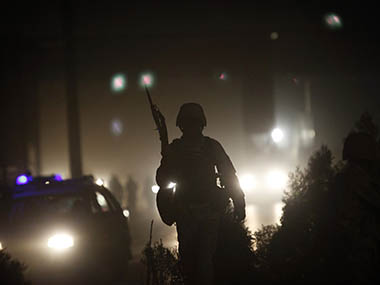Afghan elders from across the war-torn nation opened a meeting Thursday in Kabul to consider terms of a proposed security pact with the United States that would govern US military presence in the country after the NATO-led combat mission ends next year. The elders attending the so-called Loya Jirga are to hold a series of closed-door meetings until Sunday and then offer their recommendations. Its decisions are influential but not binding, and the deal must still be approved by the Afghan parliament, which could ask for more changes. The US and Afghan governments have agreed on the language of the proposed agreement, but changes can be made before any agreement is signed. Here are some of the key provisions in the document as it stands now: US TROOPS The agreement would give the US a legal basis for keeping thousands of troops in Afghanistan after December 2014 when the international combat mission ends and also allows American forces to use bases across the country. The pact is set to remain in force until the end of 2024 and beyond, unless terminated by mutual agreement or by either party with two years’ written notice. U.S. officials have not yet disclosed the number of US troops they want to keep in Afghanistan after 2014, but US officials have said that the U.S. and NATO could keep between 8,000 and 12,000 troops there. Of those, the US is expected to provide no more than 8,000 to train, equip and assist Afghan security forces. [caption id=“attachment_1243125” align=“alignleft” width=“380”]  An Afghan policeman keeps watch at the site of an attack in Kabul October 18, 2013. Reuters[/caption] LEGAL JURISDICTION The proposed agreement gives the U.S. legal jurisdiction over troops and Defense Department civilians who may get in trouble, while contractors would be subject to the Afghan judicial process if they were accused of breaking Afghan law. Deep divisions in Afghanistan over legal immunity for American soldiers had threatened to scuttle negotiations on the agreement. Such was the case in Iraq, when the US and Iraq couldn’t agree on terms of a security arrangement and all American forces were pulled out of the country. COUNTERTERRORISM The pact provides for continued US counterterrorism operations in coordination with the Afghans, with the goal that the Afghan forces should be in the lead. It also notes that US troops will not conduct any kind of combat operations unless they are “mutually agreed” upon by the US and Afghans. NIGHT RAIDS Night raids have been a contentious issue between the Afghans and U.S. forces. Afghans have been culturally offended by foreign troops who have entered their homes because they see it as a violation of the sanctity of women. U.S. forces have claimed that night raids are a useful tool in tracking down, capturing and killing insurgent leaders. The proposed agreement states that U.S. forces should not “target Afghan civilians, including in their homes, consistent with Afghan law and the United States forces’ rules of engagement.” It also says that U.S. counterterrorism operations should be conducted with “full regard for the safety and security of the Afghan people, including in their homes” and that “U.S. forces can only enter Afghan homes in extraordinary circumstances when the life or limb of Americans is at stake.” AFGHAN SECURITY FORCES The agreement states that the United States is obligated to seek funds from Congress every year to support the training, equipping and advising of Afghan security forces so that the country can independently secure and defend itself against internal and external threats. AP
The US and Afghan governments have agreed on the language of the proposed agreement, but changes can be made before any agreement is signed. Here are some of the key provisions in the document as it stands now.
Advertisement
End of Article
Written by FP Archives
see more


)

)
)
)
)
)
)
)
)



